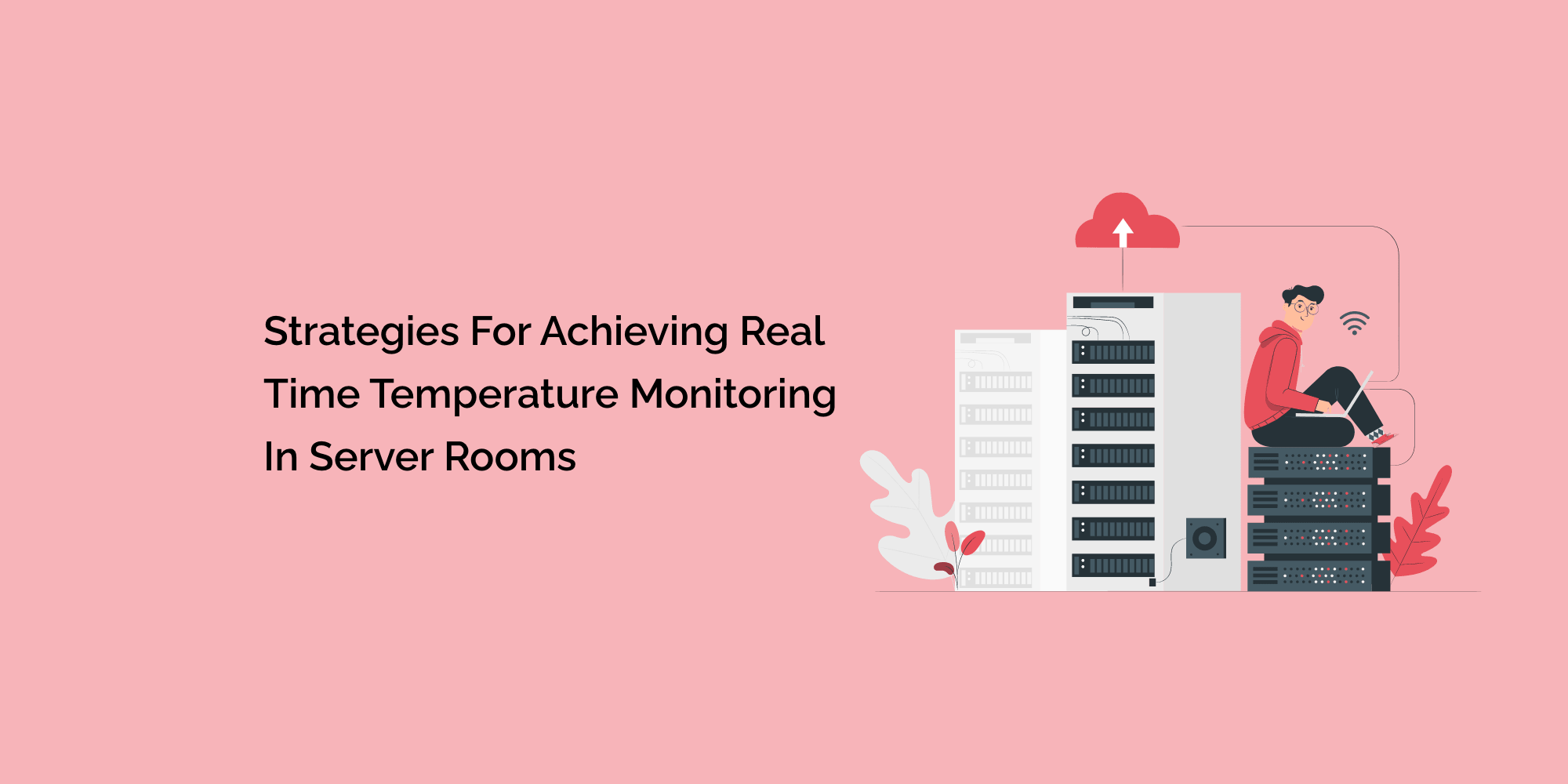Temperature monitoring is a critical aspect of maintaining optimal conditions in a server room. With the increasing demand for digital services and the reliance on IT infrastructure, real-time temperature monitoring has become essential. It enables data center administrators to proactively identify and address temperature fluctuations, ensuring the efficient and reliable operation of server rooms.
In this blog, we will explore strategies for achieving real-time temperature monitoring in server rooms, including the use of advanced sensors, monitoring software, automation, and remote accessibility.
Understanding the Importance of Real-Time Temperature Monitoring
The Impact of Temperature on Server Performance
Discussing the relationship between temperature and server performance, highlighting the potential risks of inadequate temperature management, such as equipment failure, downtime, and reduced energy efficiency.
Benefits of Real-Time Temperature Monitoring
Exploring the advantages of real-time temperature monitoring, including early detection of temperature anomalies, proactive response to critical events, improved equipment longevity, enhanced energy efficiency, and compliance with industry standards and regulations.
Strategies for Achieving Real-Time Temperature Monitoring
Advanced Temperature Sensors
Exploring the importance of using accurate and reliable temperature sensors in server rooms. Discussing different sensor types, such as thermocouples, resistance temperature detectors (RTDs), and digital sensors, and their suitability for real-time monitoring. Highlighting the benefits of sensor placement in critical areas to capture accurate temperature readings.
Monitoring Software and Data Visualization
Introducing monitoring software that collects and analyzes temperature data from sensors in real-time. Discussing the features and capabilities of monitoring software, including customizable dashboards, real-time alerts, historical data analysis, and data visualization tools. Exploring the benefits of visual representations of temperature trends and patterns.
Automation and Threshold Alarms
Discussing the importance of automation in real-time temperature monitoring. Exploring the use of threshold alarms that trigger alerts when temperature readings exceed predefined limits. Explaining how automation reduces the reliance on manual monitoring, allowing administrators to focus on proactive management tasks.
Integration with Building Management Systems (BMS)
Exploring the integration of temperature monitoring systems with Building Management Systems (BMS). Discussing the advantages of a unified monitoring platform that includes temperature monitoring alongside other critical parameters such as power consumption, humidity, and airflow. Highlighting the benefits of centralizing monitoring and control for improved efficiency.
Remote Accessibility and Mobile Applications
Exploring the benefits of remote accessibility in real-time temperature monitoring. Discussing the use of mobile applications that provide administrators with access to temperature data and alerts from anywhere. Exploring the advantages of remote accessibility in enabling timely response to temperature-related issues.
Best Practices for Real-Time Temperature Monitoring
Regular Calibration and Maintenance
Highlighting the importance of regular calibration and maintenance of temperature sensors to ensure accurate readings. Discussing best practices for sensor calibration and routine maintenance procedures.
Historical Data Analysis and Trending
Exploring the benefits of analyzing historical temperature data and identifying trends. Discussing how historical analysis can provide insights into temperature patterns, allowing administrators to anticipate potential issues and make informed decisions.
Redundancy and Backup Systems
Highlighting the importance of redundancy and backup systems in real-time temperature monitoring. Discussing the use of multiple sensors for cross-validation and the implementation of backup monitoring systems to ensure continuous monitoring in case of sensor or software failures.
Conclusion
Achieving real-time temperature monitoring in server rooms is crucial for maintaining optimal conditions, preventing equipment failures, and maximizing energy efficiency. By implementing strategies such as advanced sensors, monitoring software, automation, integration with Building Management Systems, and remote accessibility, data center administrators can proactively monitor temperature fluctuations and address issues promptly.
Real-time temperature monitoring provides numerous benefits such as improved equipment performance, reduced downtime, increased energy efficiency, and compliance with industry standards. Advanced temperature sensors and monitoring software enable accurate and reliable data collection, while automation and threshold alarms facilitate timely alerts and proactive response to temperature anomalies.
Integration with Building Management Systems centralizes monitoring and control, streamlining operations and enhancing overall efficiency. Remote accessibility through mobile applications empowers administrators to monitor temperature conditions from anywhere, ensuring prompt action in case of critical events.
To ensure the effectiveness of real-time temperature monitoring, it is important to follow best practices such as regular calibration and maintenance of temperature sensors. Historical data analysis and trending provide valuable insights into temperature patterns and enable proactive measures to address potential issues. Redundancy and backup systems help ensure continuous monitoring, even in the event of sensor or software failures.
In conclusion, implementing strategies for real-time temperature monitoring in server rooms is essential for maintaining optimal conditions and maximizing the performance and reliability of IT infrastructure. By leveraging advanced sensors, monitoring software, automation, integration, and remote accessibility, data center administrators can proactively identify and address temperature fluctuations, minimizing the risk of equipment failure, downtime, and energy inefficiency.
Real-time temperature monitoring not only improves operational efficiency but also contributes to compliance with industry standards and regulations. Embracing these strategies and best practices will result in a more resilient and efficient server room environment, ensuring the seamless operation of critical IT systems. Invest in the right temperature monitoring solutions and embrace the power of real-time monitoring to safeguard your server room and optimize the performance of your data center infrastructure.








